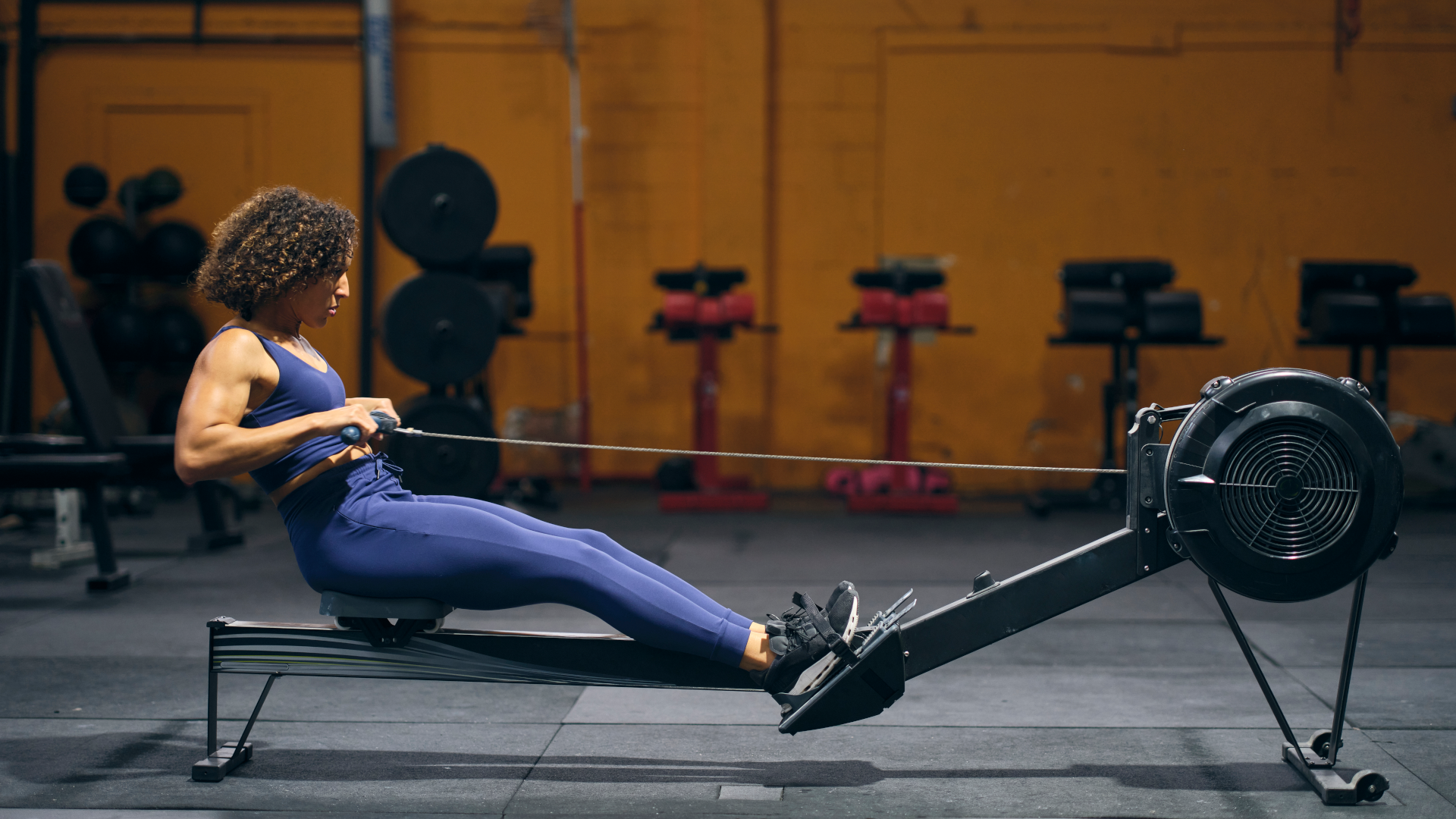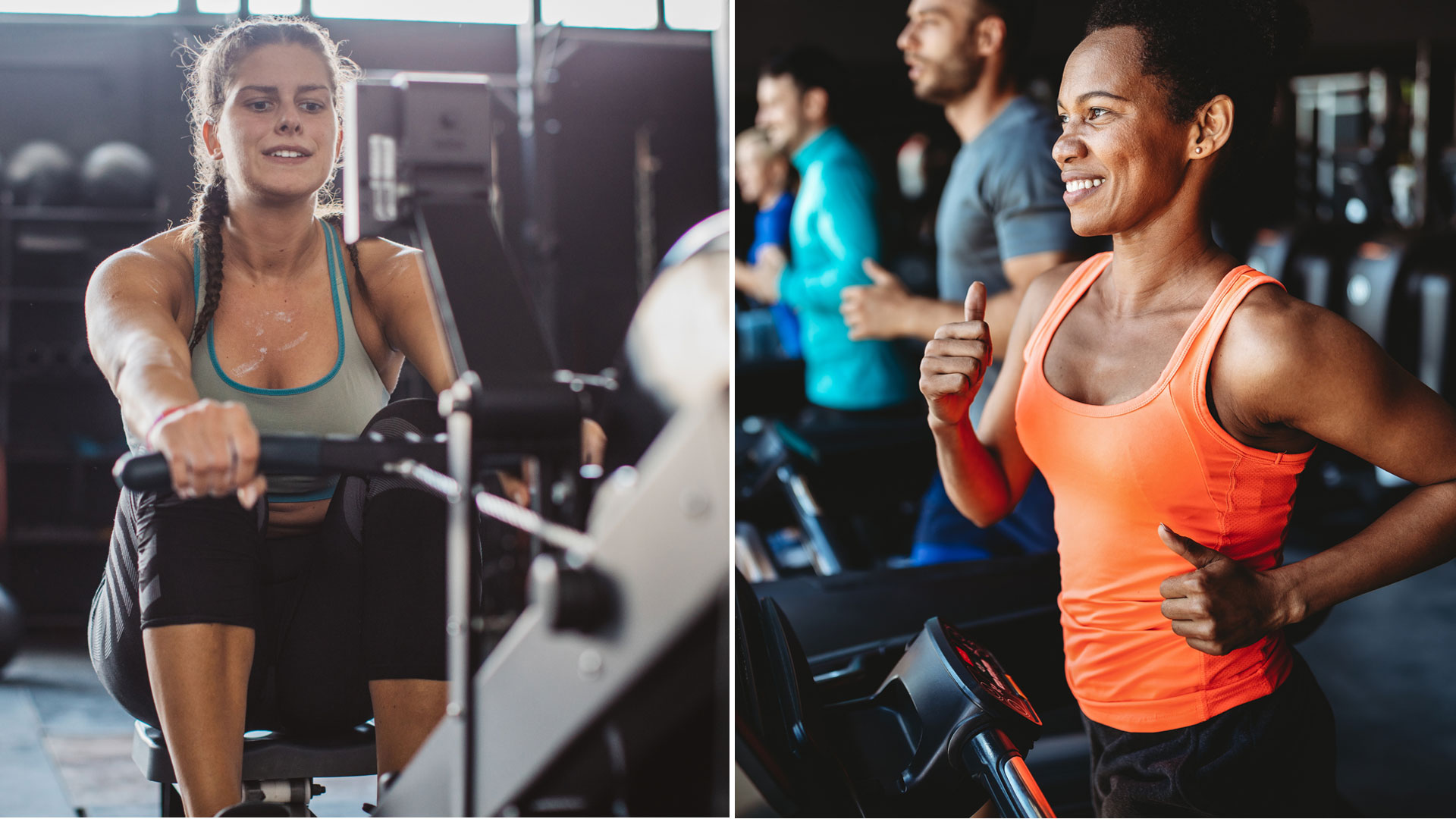
Rowing vs running: this is the question anyone who wants to get fit and lose weight ponders over, especially those who haven't got much time to exercise. How do you choose between two of the most popular types of exercises and what are the benefits of each?
Whichever cardio workout you choose, cardiovascular exercise is beneficial, according to Frontiers in Cardiovascular Medicine. It doesn’t matter whether you’re rowing, running, cycling, swimming or a combination of the above, you’ll still experience a range of benefits including improved fat use, a stronger heart, reduced blood pressure, lower cholesterol, improved insulin sensitivity and an enhanced mood.
This is merely a snapshot of the health benefits of cardiovascular exercise as well – there are millions of tiny physiological processes that are improved through regular cardio, irrespective of how you perform it. The frequency and intensity of your cardio will largely determine how beneficial it is.
Current guidelines from the American College of Sports Medicine and the American Heart Association suggest that adults should aim for 150 minutes of moderate-intensity exercise each week, with 5 days of 30 minutes being advised.
Want to exercise at home? Have a look at our best treadmill and best rowing machine guides to make sure you choose the best cardio machine for your needs. On a budget or lack the space? No problem! We have a roundup of the best cheap treadmills and best folding treadmills, too.
Fitness specific benefits of cardiovascular exercise
Whilst general health is improved by all different types of exercise, there are certain specific improvements we make when we focus on cardiovascular exercise in particular. Here’s the overview...
Improved stamina
The most obvious fitness benefit from cardiovascular exercise is that our stamina and endurance improves. Stamina typically improves after any progressive cardiovascular exercise, but PubMed research shows that high intensity interval training (HIIT) improves stamina more effectively than steady-state cardio training.
Sign up to the T3 newsletter for smarter living straight to your inbox
Get all the latest news, reviews, deals and buying guides on gorgeous tech, home and active products from the T3 experts
Enhanced muscular endurance
Whilst the improvement of muscular strength via cardio training is limited, cardiovascular training improves muscular endurance, according to Cold Spring Harbor Perspectives in Medicine. It does so by increasing the number of mitochondria in the cells, providing them with more energy over a longer duration. This makes the muscles more fatigue-resistant.
The health benefits of rowing machines
The rowing machine is the ultimate all-body cardiovascular machine. In a single exercise you engage the legs, core, back and arms. Very few cardio exercise options give you the same amount of muscle engagement in a single movement.
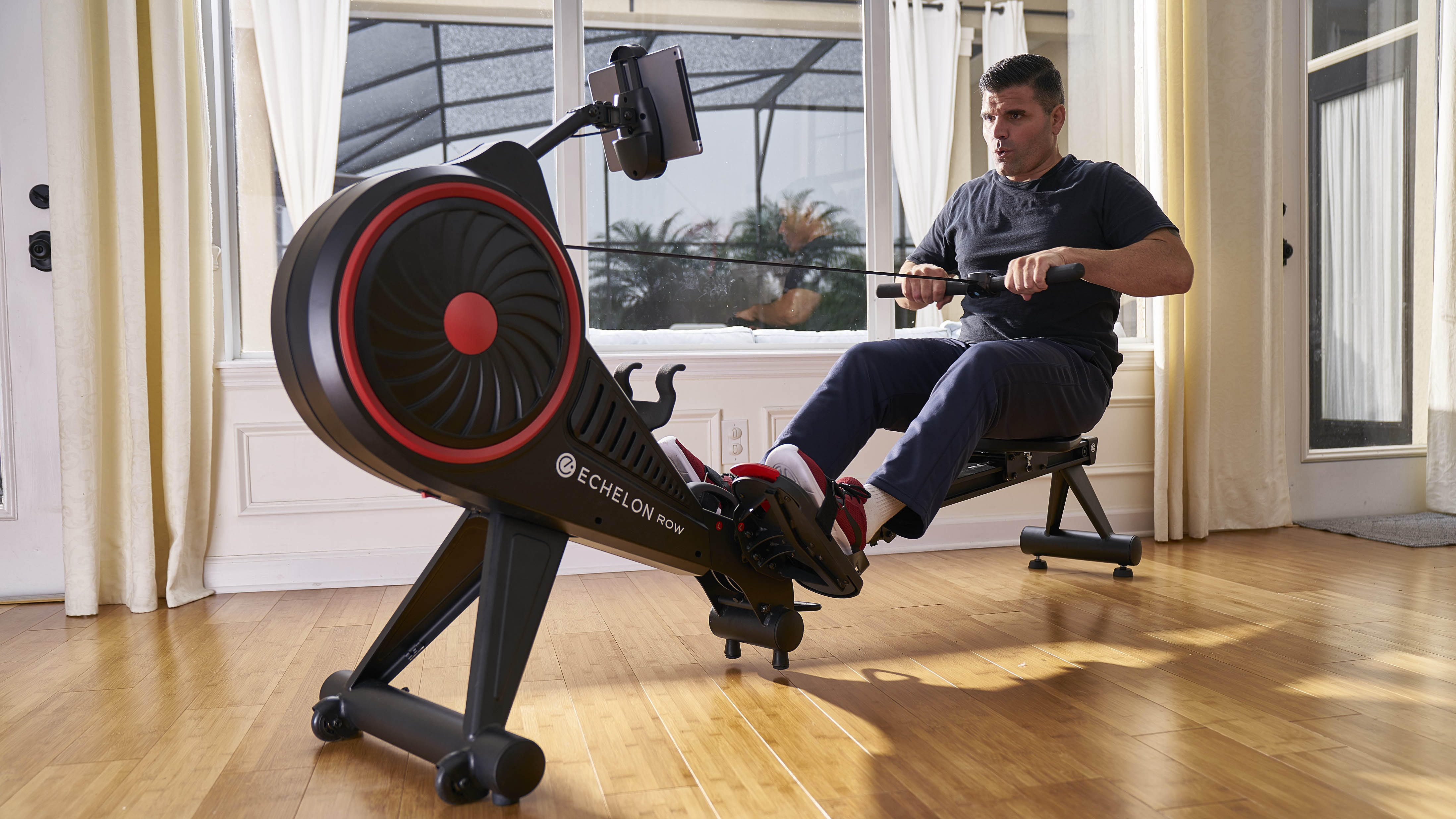
Rowing machines also have zero impact through the joints, making them perfect for people who have suffered joint injuries or pain. It also means that if you have joint injuries that are aggravated by high impact activities, you can still enjoy a tough workout without risking further damage.
Meanwhile, a Journal of Science and Medicine in Sport study into the back health of elite rowers showed that rowing actually helped to improve lower back strength and health. If you have had lower back issues, rowing could be a safe and effective way to repair the damage or prevent future problems.
The health benefits of treadmills
Although all cardiovascular exercise is excellent for burning calories, treadmills are particularly good. They are known to be the highest calorie burners (PubMed) of all the mainstream cardio machines, as shown in the research.
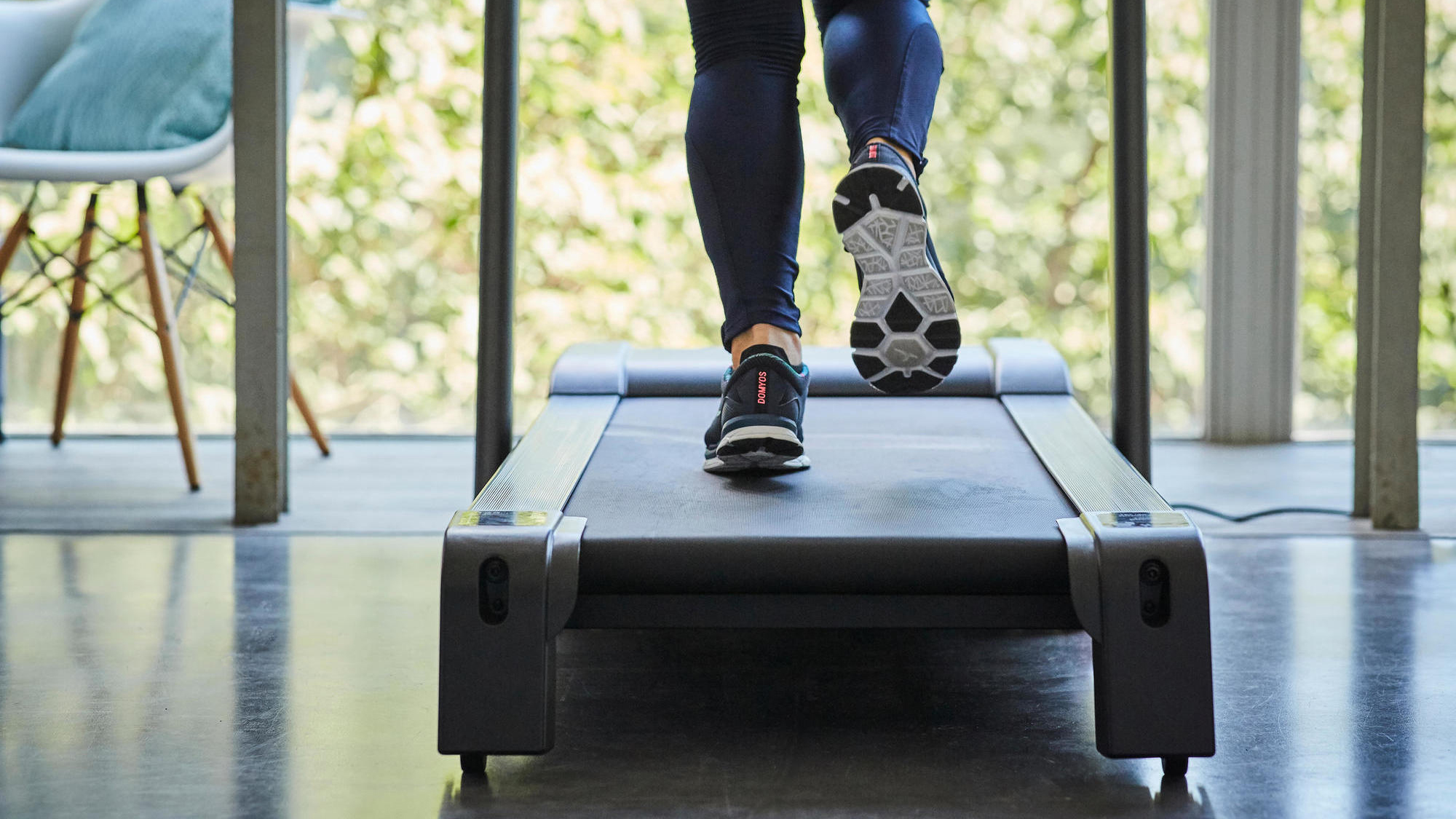
Plus, in a Medicine and Science in Sports and Exercise study measuring VO2 max improvements in swimmers and runners across a like-for-like intensity training program centered on running or swimming, runners experienced a 28% improvement in their fitness whereas swimmers improved only 25%. Although workout loads and durations were the same, the running was more effective at improving stamina.
The double-edged sword with treadmill running is the effect it has on the bones and joints. It’s a much higher impact cardio machine than the others, but as long as there are no pre-existing injuries, this PubMed study suggests that running can strengthen the intervertebral discs, actually improving back health.
Rowing vs Running - Verdict
When it comes to rowing vs running, there’s no doubt that both the rowing machine and the treadmill have their place when it comes to training. They’re both very effective exercise options with their own unique health benefits.
That being said, we’re looking at a comparison, so which one is the best overall?
A rowing machine has the advantage of being a full-body workout, which is a major plus point. It makes it an efficient workout in that it removes the need to do other endurance work on other parts of the body.
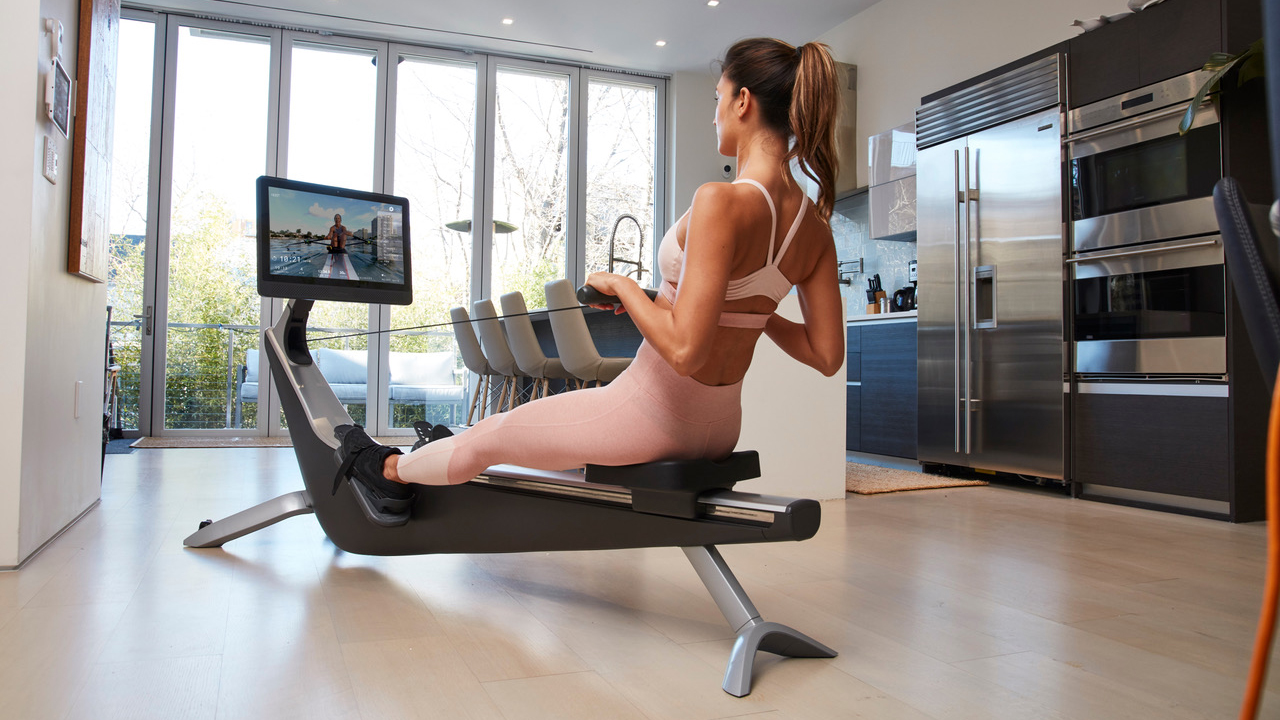
There’s also zero impact with the rowing machine, meaning that it is safe for all - even those carrying certain types of injuries. Beyond that, the ongoing risk of injury is basically nil - no pounding, no twisting, no complicated technique to risk injury with etc. Even if your technique is bad, it’s highly unlikely to be dangerous.
Running is a great calorie burner, having been shown in various studies to burn more energy than other cardiovascular machines. It also builds endurance very effectively and there’s solid evidence that it can improve back health, as we’ve pointed to in this article.
However, running comes with inherent risks. The possibility of injury is much higher, it’s not immediately suitable for everyone (especially those with an injury) and it’s not a full-body workout in the way that rowing is.
Given that rowing is an effective calorie burner, there’s no risk to anyone, it’s a simple technique to get to grips with, it’s a full body workout and it can be effective for anyone at any fitness level, I’d suggest that you opt for a rowing machine.
-
 3 overrated shoulder exercises, according to a fitness expert (and what to do instead)
3 overrated shoulder exercises, according to a fitness expert (and what to do instead)Sculpt 3D shoulders whilst minimising injury with these three alternative exercises
By Bryony Firth-Bernard Published
-
 5 last-minute marathon tips from an athletics champion to help you race like a pro
5 last-minute marathon tips from an athletics champion to help you race like a proEuropean Silver Medalist Holly Archer shares some words of wisdom to make your 26.2 mile journey a good one
By Bryony Firth-Bernard Published
-
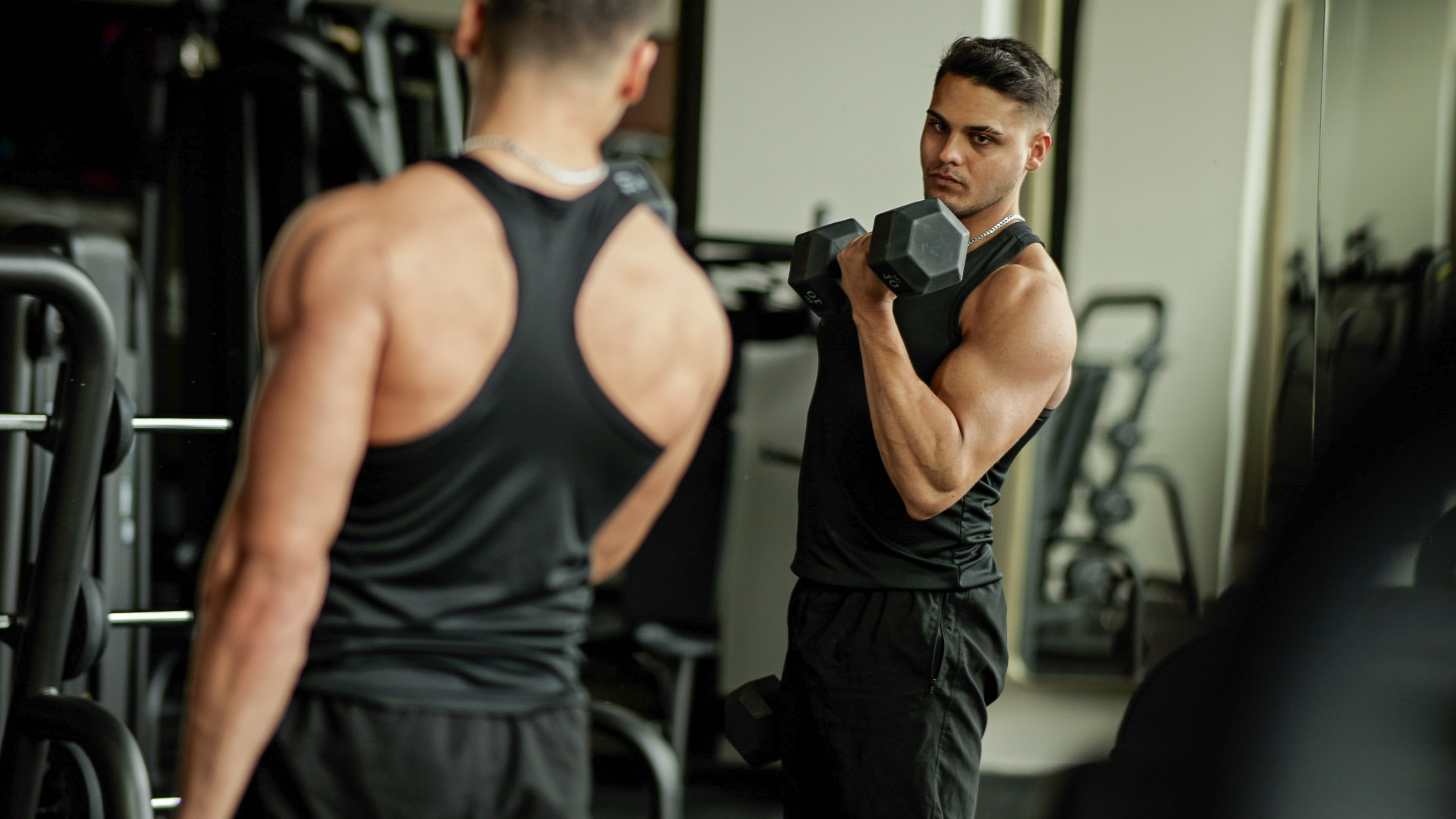 The best biceps exercise, according to science
The best biceps exercise, according to scienceHave you been training your biceps wrong this whole time?
By Lucy Miller Published
-
 5 outdated running myths that you need to stop believing, say these experts
5 outdated running myths that you need to stop believing, say these expertsPut them in the bin, forget them!
By Bryony Firth-Bernard Published
-
 Finally! Represent 247 launches its first womenswear collection, taking you from street to gym in style
Finally! Represent 247 launches its first womenswear collection, taking you from street to gym in styleIt's about time guys
By Bryony Firth-Bernard Published
-
 3 chest exercises you’re probably not doing to supersize your pecs
3 chest exercises you’re probably not doing to supersize your pecsA killer pec pump awaits
By Bryony Firth-Bernard Published
-
 When’s the best time to take creatine?
When’s the best time to take creatine?The science-backed supplement is a must for building strength and muscle, but is there an optimal time to take it?
By Bryony Firth-Bernard Published
-
 Three overrated core exercises and what you should do instead
Three overrated core exercises and what you should do insteadA fitness expert says these exercises aren’t all they’re cracked up to be
By Bryony Firth-Bernard Published
